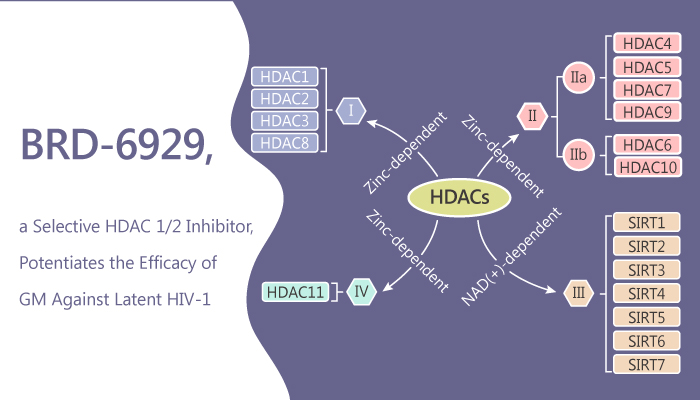Histone deacetylase (HDAC) enzymes, including subtypes comprising class I (HDAC1, HDAC2, HDAC3, and HDAC8) and class II (HDAC 4–7, HDAC9 and HDAC10), control the deacetylation of histone and non-histone proteins. HDAC enzymes are important mediators in epigenetic regulation of gene expression. HDACs reverse chromatin acetylation and alter transcription of oncogenes and tumor suppressor genes. In addition, HDACs deacetylate numerous nonhistone cellular substrates that govern a wide array of biological processes including cancer initiation and progression. Selective inhibition of HDAC1 and HDAC2 may be a viable mechanism for the development of clinical mood disorder treatments. Here, Frederick A. Schroeder, et al find a slow-binding, benzamide-based inhibitor BRD-6929.
BRD-6929 is a brain-penetrant, selective Inhibitor of HDAC1 and HDAC2. Especially, BRD-6929 inhibits HDAC1 and HDAC2 with IC50s of 1 and 8 nM, respectively. BRD-6929 is 50–400 fold selectivity over class I HDAC3 (IC50=458 nM), and no appreciable inhibition of HDAC8 or of the class II HDACs.

Additional biochemical assays reveal high-affinity (Ki=0.2–1.5 nM) and slow-on/slow-off binding kinetics of BRD-6929 to HDAC1 and HDAC2 with half-lives (T1/2) of 40- and 80-hr (2400–4800 min). In particular, BRD-6929 has a lower affinity (Ki=270 nM) and engagement of HDAC3 (T1/2=20 hr). Following chronic treatment, BRD-6929 (45 mg/kg, i.p.) significantly reduced hyperlocomotion by 36% (F treatment (2,33)=3.581, post hoc p<0.05). Besides, BRD-6929 (TPB) also is chosen to combine with Gnidimacrin (GM) for latent HIV-1 activation. As a result, GM/BRD-6929 is a unique combination that may reduce latent HIV-1 reservoirs at nontoxic concentrations. Overall, BRD-6929 is brain penetrant with selectivity and slow-on/slow-off binding for HDAC1/2.